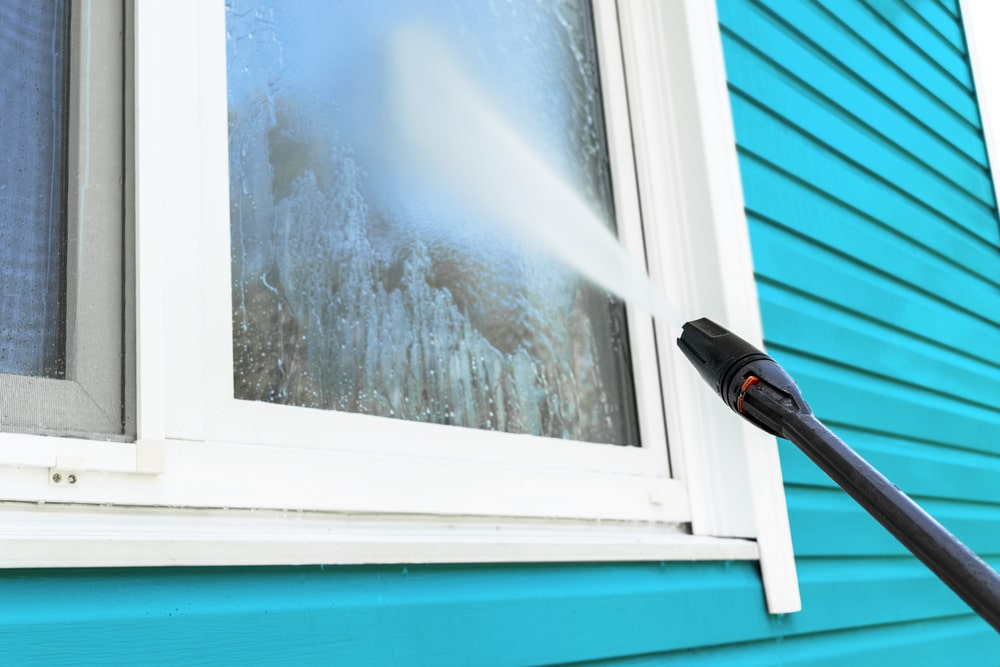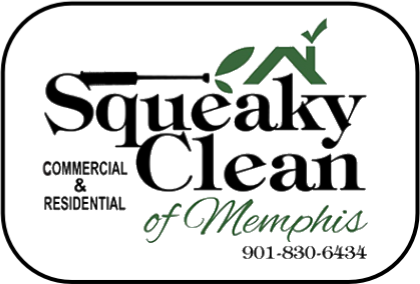
Imagine looking out of crystal-clear windows, enhanced by the meticulous, expert technique of pressure washing. Clean windows significantly improve your home’s curb appeal.
Pressure washing windows requires keen attention to detail and understanding of pressure settings. Too much pressure can cause damage, while too little is ineffective.
Preparing Windows for Pressure Washing
Before you start, remove any screens from the windows to prevent damage and ensure thorough cleaning. Check for any cracks, loose seals, or other damages that might worsen under pressure, and address these issues timely.
Next, safeguard the surrounding area by covering plants, furniture, and light fixtures. This precaution minimizes the risk of unintended water damage.
Gathering Necessary Tools
Equipping yourself with the right tools—such as a pressure washer—can significantly enhance your window cleaning endeavors.
Quality equipment can reduce cleaning time and improve the effectiveness of your pressure washing.
For optimal results, ensure you have necessary accessories like extension wands, nozzle attachments, and a cleaning solution appropriate for your window type. These tools will collectively help in achieving a streak-free shine.
Consider renting or purchasing a high-quality pressure washer, especially if you have multiple windows or large surfaces to clean. Proper tools can make all the difference in the efficiency and outcome of your work.
Safety Precautions
When pressure washing windows, taking proper safety precautions is paramount to prevent injuries and damage.
- Wear Protective Gear: Safety goggles, gloves, and non-slip footwear are essential.
- Check Electrical Sources: Ensure any nearby electrical outlets or cords are sealed or kept dry.
- Stabilize Ladders Properly: Use ladders with stabilizers and ensure they are on even ground to prevent falls.
- Use Correct Nozzle: Choose a nozzle with lower pressure to avoid shattering glass.
- Keep Distance: Maintain an appropriate distance from the window to prevent applying too much pressure directly.
Adhering to these measures will mitigate risks associated with pressure washing.
Always read the pressure washer’s manual to understand specific safety instructions.
If unsure, consider hiring a professional to ensure a job well done without compromising safety.
Choosing the Right Pressure Washer
Selecting the appropriate pressure washer is crucial for achieving optimal results. Homeowners should consider factors such as pressure output, nozzle types, and ease of use. Generally, a pressure washer with a PSI (pounds per square inch) between 1200-2000 is recommended for window cleaning.
A higher PSI can potentially damage glass, whereas a lower PSI may not provide sufficient cleaning power. Additionally, ensure the pressure washer has adjustable settings to tailor the pressure according to the task. Look for features like a detergent tank and different spray patterns to further enhance your cleaning efficiency.
Types of Pressure Washers
There are different types of pressure washers designed for various household and professional tasks.
Primarily, pressure washers are classified into two main categories: electric and gas-powered. Each type has its distinct advantages.
Electric models are typically lighter, quieter, and more environmentally friendly. They are suitable for light to medium-duty tasks, such as cleaning windows, decks, and vehicles.
Gas-powered pressure washers, on the other hand, offer higher pressure and are ideal for heavy-duty cleaning tasks. They provide greater mobility since they do not require a power outlet.
Understanding these differences helps homeowners select the most appropriate pressure washer for their specific cleaning needs.
Selecting Proper Nozzles
Selecting the right nozzle is critical for achieving optimal cleaning results while safeguarding your windows. Different nozzles produce varying spray patterns and pressures.
- 0-degree nozzle: Provides a concentrated jet stream, ideal for tough stains but not recommended for windows.
- 15-degree nozzle: Generates a narrow spray, suitable for surface prep tasks.
- 25-degree nozzle: Offers a versatile medium-width spray, great for general cleaning.
- 40-degree nozzle: Produces a wide spray, perfect for delicate surfaces like windows.
- Soap nozzle: Designed for applying detergent with low pressure.
Choosing the correct nozzle ensures both efficiency and protection for your windows.
For window cleaning, typically a 40-degree nozzle or a soap nozzle, followed by a rinse, offers the best balance of effectiveness and safety.
Step-by-Step Cleaning Process
Begin by ensuring all windows are securely closed, a vital step to prevent any unintentional water ingress. Use a soft-bristle brush to gently remove loose debris, which facilitates a more thorough pressure washing process.
Next, prepare your pressure washer with a 40-degree nozzle, setting it to “low pressure” mode. Apply an even coating of a suitable window cleaning solution, taking care to avoid excessive detergent. Let the solution sit for a few minutes, but do not allow it to dry, then rinse thoroughly to achieve crystal-clear results.
Applying Detergent
To achieve optimal cleaning results, applying detergent correctly is essential. This process ensures that dirt and grime are effectively loosened.
- Choose a high-quality detergent: Ensure compatibility with your pressure washer.
- Pre-dilute if necessary: Some detergents require mixing with water beforehand.
- Use a soap nozzle: Switch to a low-pressure soap nozzle to apply detergent effectively.
- Even application: Apply an even coat across the surface, avoiding areas already dry.
- Allow dwell time: Let the detergent sit for a few minutes but prevent it from drying out.
Using appropriate methods will help in breaking down tough stains and accumulated dirt.
Always follow manufacturer instructions for both detergent and pressure washer for best results.
A meticulous approach guarantees spotless and streak-free windows.
Rinsing Techniques
Rinsing properly is crucial for achieving spotless and streak-free windows.
After applying detergent, it’s important to switch to a high-pressure nozzle before beginning the rinsing process. This change ensures the effective removal of soap residues and loosened grime. Begin at the top of the window and work your way down. This technique helps prevent streaks and redistributes clean water efficiently.
To avoid water spots, ensure you use distilled or filtered water for the final rinse. Tap water may contain minerals that can cause spotting. Rinse each section thoroughly, making sure no detergent remains on the surface to maximize cleanliness.
Lastly, maintaining a consistent distance between the nozzle and the window ensures even pressure and prevents potential damage. By keeping the nozzle about a foot away from the glass, you can achieve a gentle yet effective clean. Proper rinsing not only enhances clarity but also contributes to the longevity of your windows.
Maintenance After Cleaning
After successfully pressure washing your windows, a regimen of routine maintenance will help preserve their clarity and condition. Regularly inspect windows for dirt buildup, especially after inclement weather, which can deposit debris and grime.
Apply a protective sealant to the glass surfaces to enhance durability and repel contaminants. This layer acts as a barrier, reducing the frequency of deep cleans. In addition, ensure window frames and seals are in good condition to prevent water ingress and potential damage, prolonging both the aesthetic and functional lifespans of your windows.
Inspecting Windows
Before beginning the pressure washing process, a thorough inspection of your windows is essential. Check the condition of the glass, frames, and seals to identify any damage or wear that might require attention.
Such an inspection helps to avoid exacerbating existing issues during pressure washing.
Cracks, chips, or other imperfections should be noted to ensure they don’t worsen under high-pressure water. Additionally, inspect for any loose or damaged seals or frames that might allow water ingress.
By addressing these issues upfront, you can avoid costly repairs and maintain the integrity of your windows. Regular inspection is proactive, an opportunity to catch problems early, ensuring your pressure washing efforts are both safe and effective. This not only preserves window longevity but also enhances overall home maintenance strategies.
Proper Storage of Equipment
Storing your pressure washing equipment properly is vital to maintaining its longevity and efficiency.
In Memphis’ humid climate, improper storage can lead to rust and other issues. Always keep your equipment in a dry, climate-controlled area.
Before storage, ensure all water is drained to prevent internal freezing or mildew. This includes the pressure hoses and any attachments utilized.
Furthermore, regularly inspect storage areas for pests or moisture, both of which can cause damage. Invest in durable storage solutions to keep everything organized and accessible.
Proper storage not only saves money on repairs but also keeps your tools ready for immediate use.
Hiring a Professional Instead
If pressure washing windows seems daunting, hiring a professional is an excellent option. Experienced technicians use specialized equipment and methods, ensuring a thorough and safe clean.
Professionals are well-versed in local weather conditions. They understand how Memphis’ humid climate impacts window maintenance.
Additionally, professional pressure washing services like Squeaky Clean of Memphis, often provide insurance coverage. This means any accidental damage is their responsibility, not yours.
They can also offer tips for maintaining your windows between cleanings. This expert advice helps prolong the benefits of their service.
Hiring a professional becomes advantageous for those with large homes. Those with limited physical ability or tight schedules also benefit from this service.
Ultimately, the decision to hire a pro ensures peace of mind. Your windows receive meticulous care, maintaining both their appearance and durability.
Conclusion
Achieving pristine, streak-free windows through pressure washing requires precision, the right equipment, and a detailed approach. By adhering to the methods outlined in this guide—such as selecting appropriate pressure settings, using the right nozzles, and applying and rinsing the cleaning solution correctly—you can ensure your windows not only sparkle but also remain in excellent condition.
Preparing thoroughly by inspecting for damages, safeguarding the surrounding area, and utilizing proper safety measures is crucial for a successful cleaning experience. Regular maintenance following the wash and proper storage of your equipment will extend the longevity of your windows and your tools.
For homeowners who find the task overwhelming or time-consuming, hiring a professional offers a reliable alternative. Skilled technicians bring expertise and specialized equipment to the job, guaranteeing optimal results with minimal risk.
Whether tackling the job yourself or enlisting expert help, maintaining clean, clear windows significantly enhances the aesthetic and value of your home. With the right techniques and tools, spotless windows are well within your reach. Now pressure washing a roof you may want to leave to the pros!
Revive your home’s curb appeal with Squeaky Clean of Memphis – expert pressure washing for a spotless finish! Check out some places on the web!
